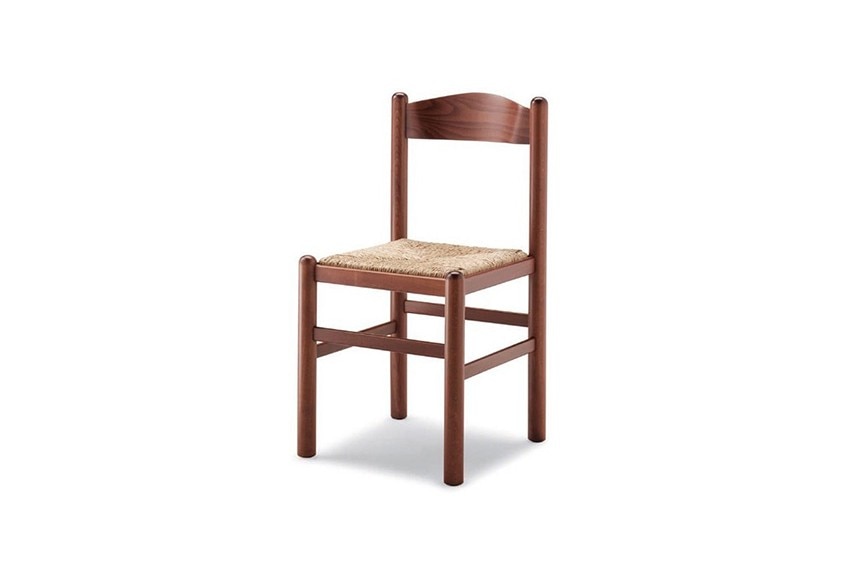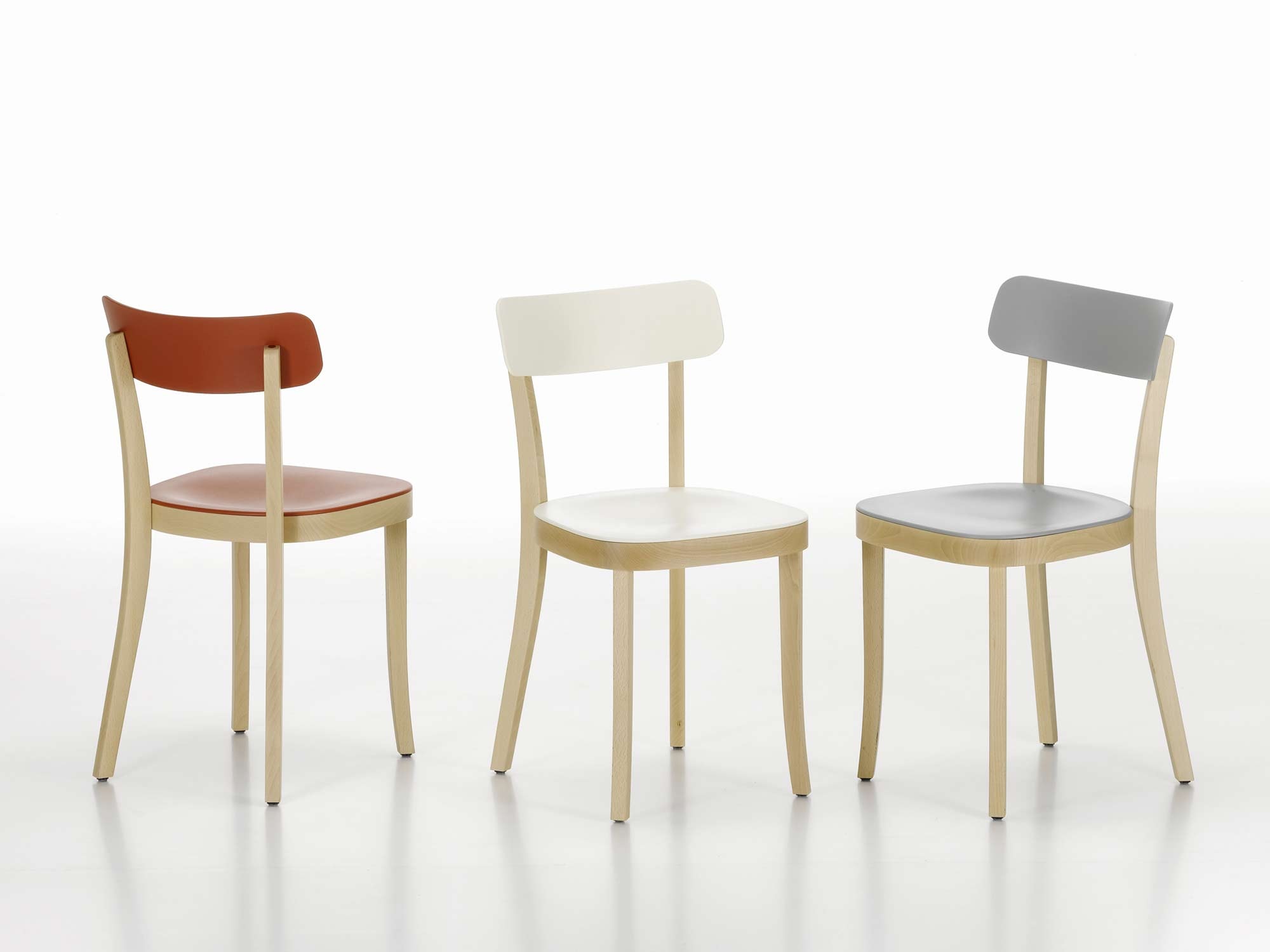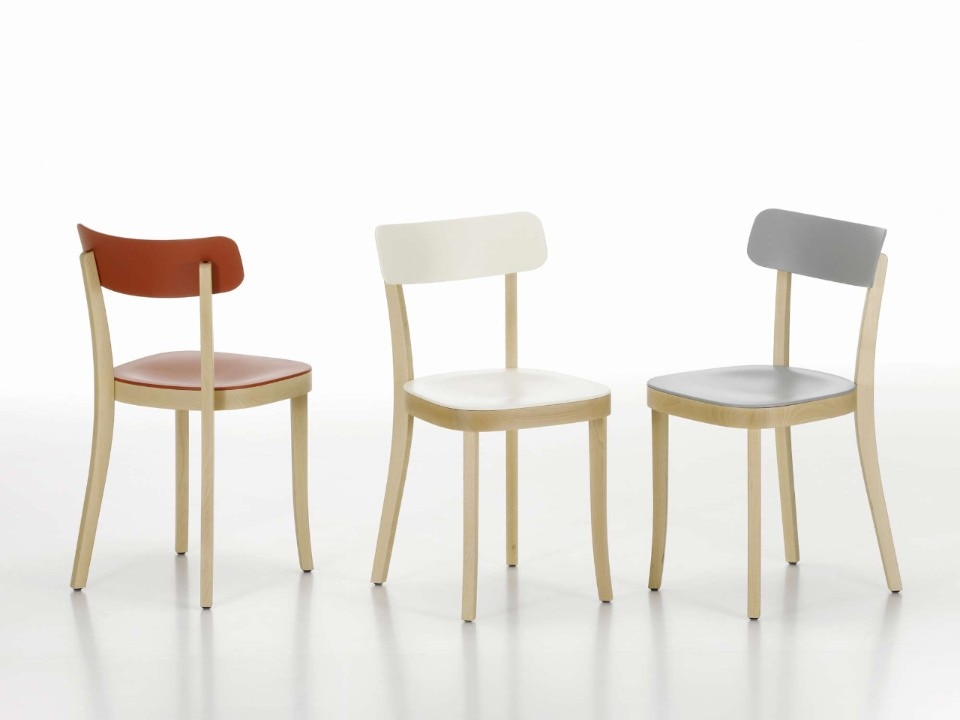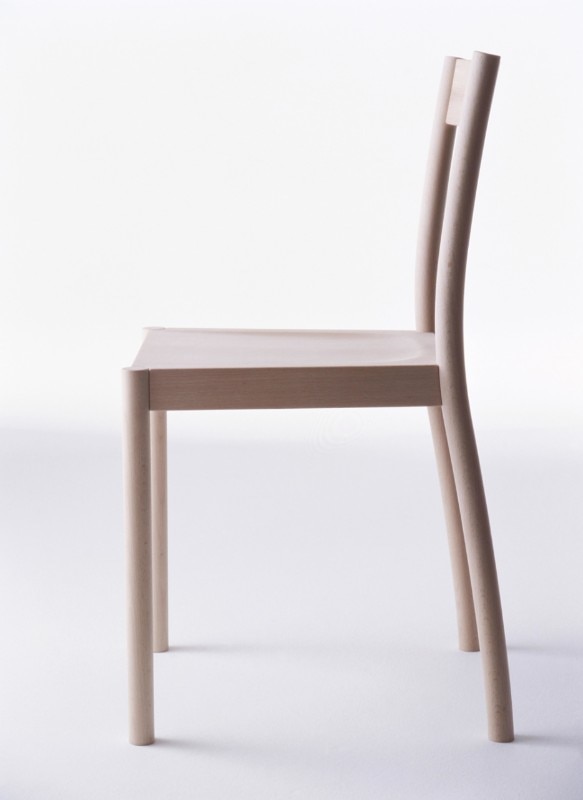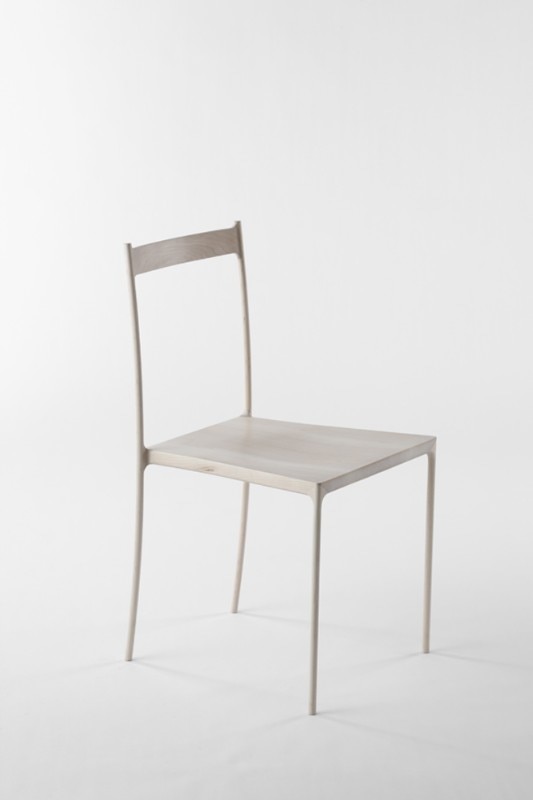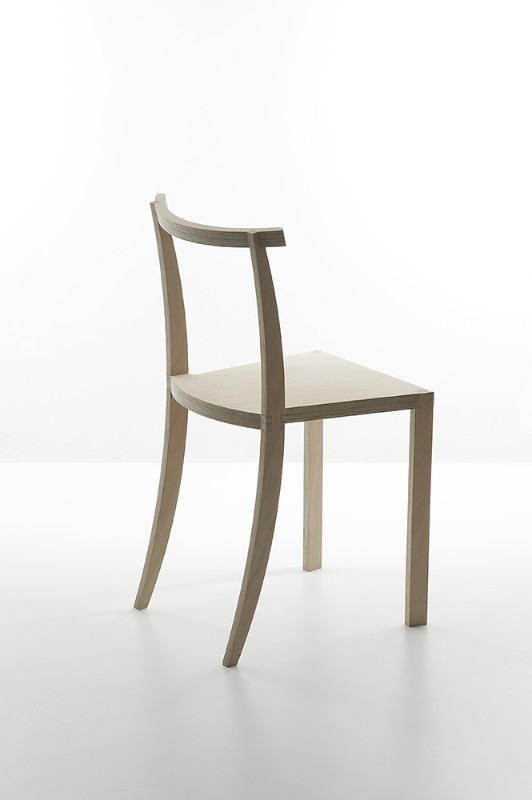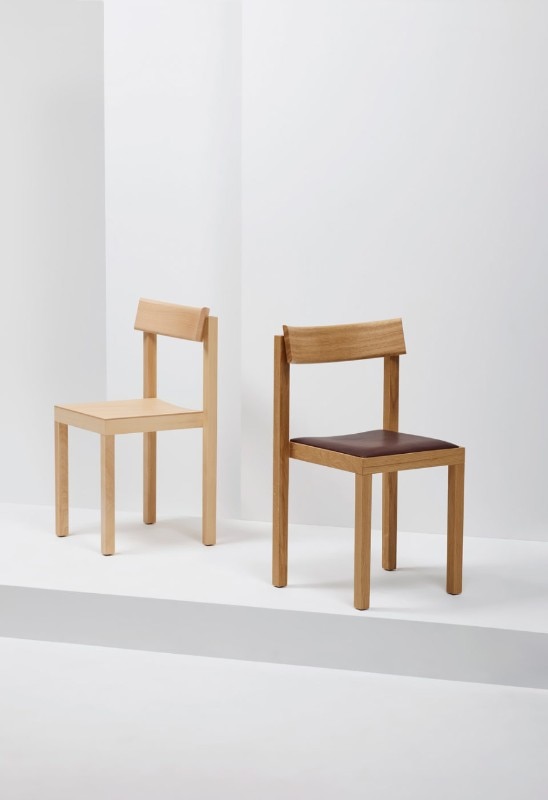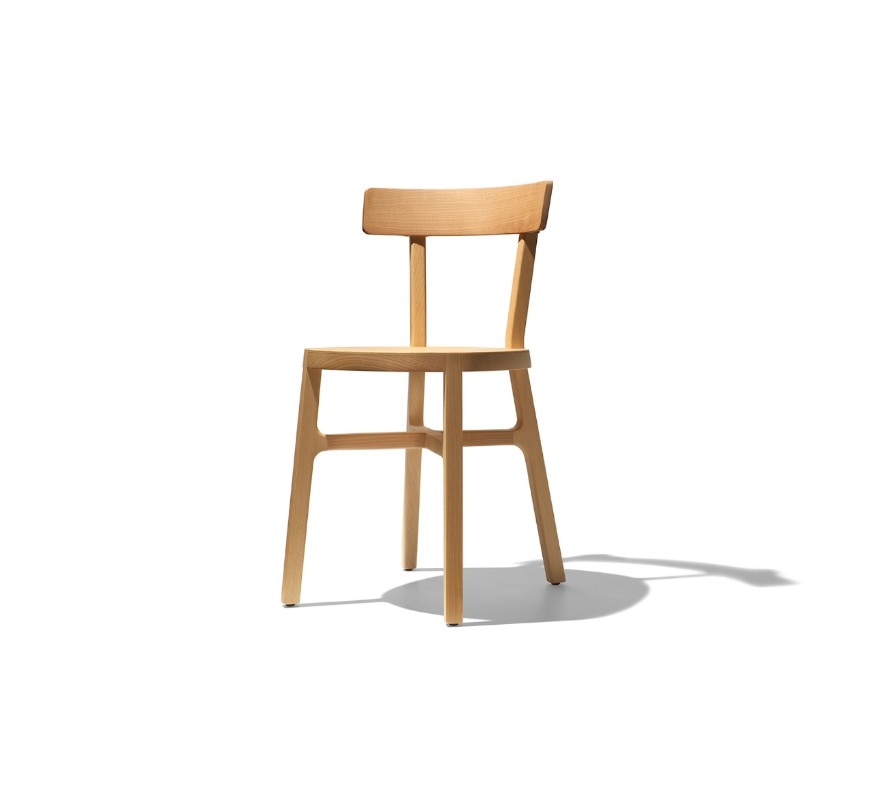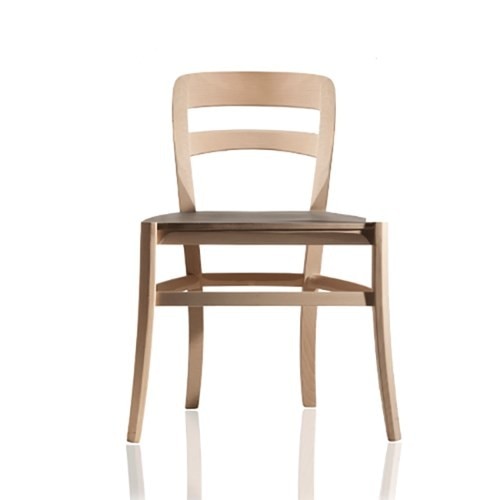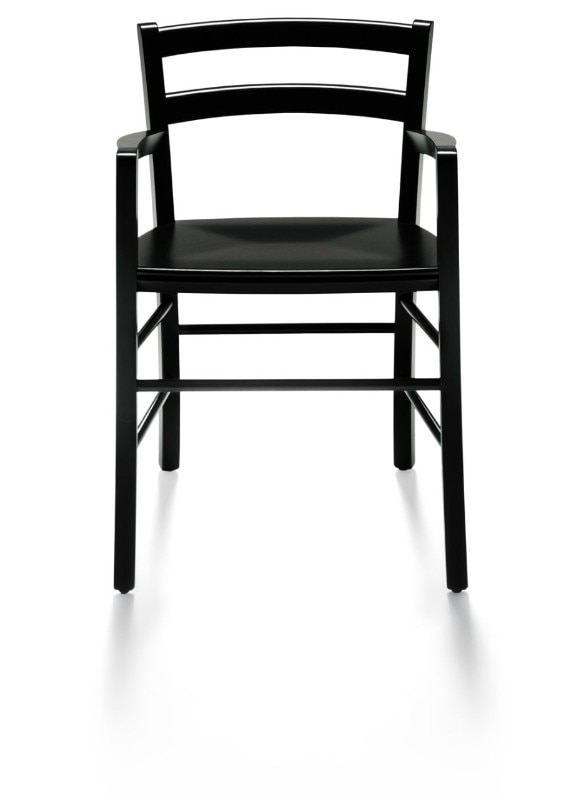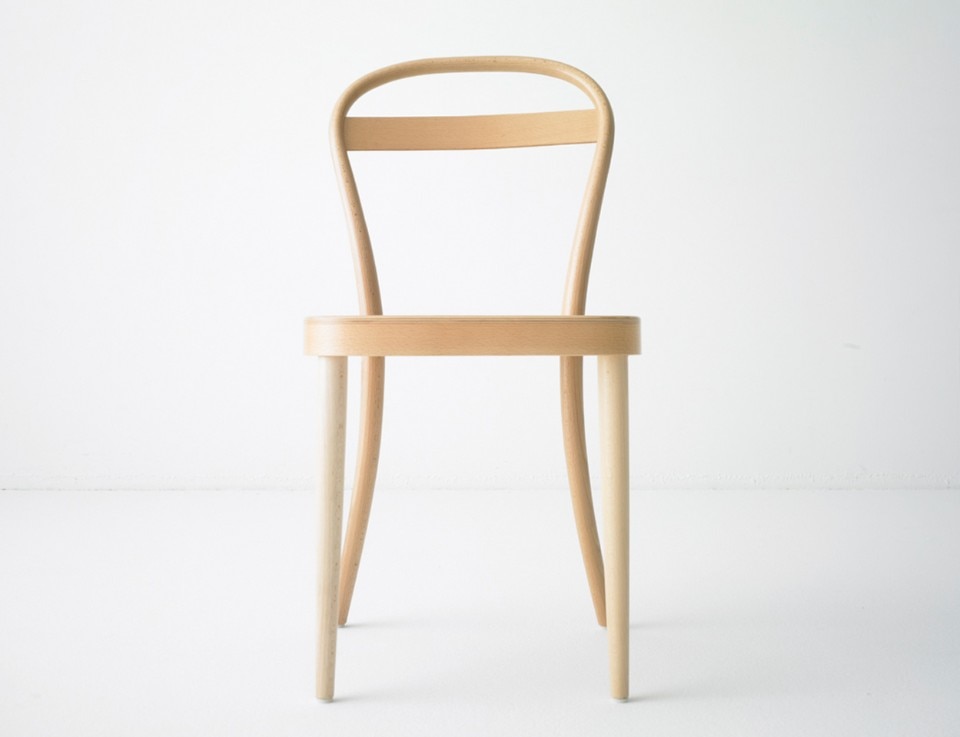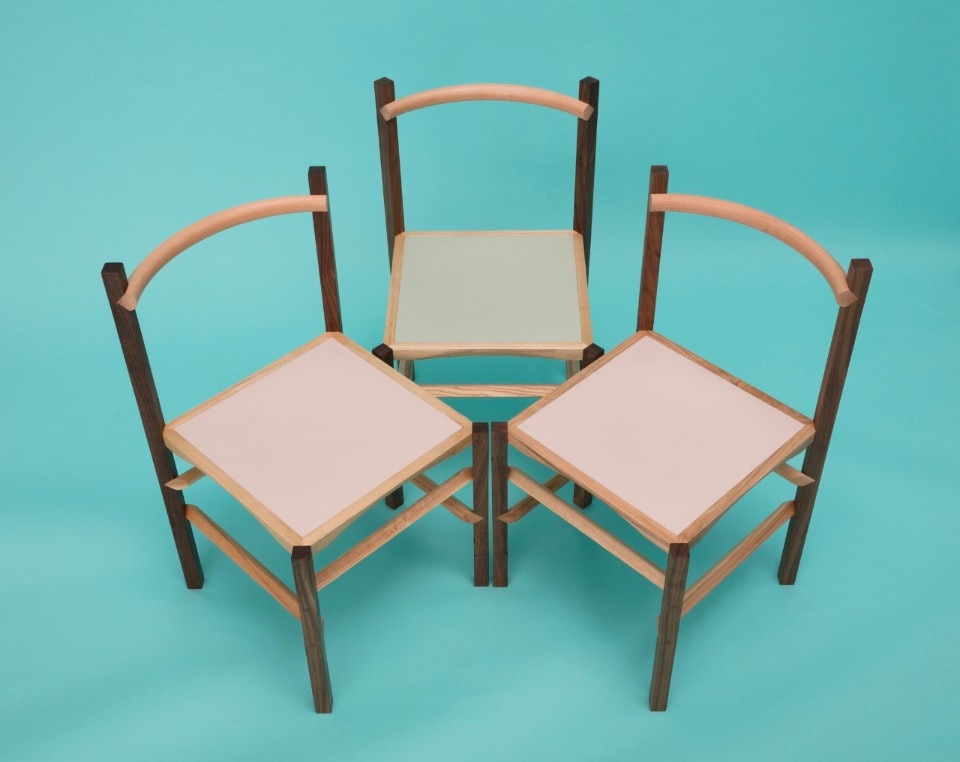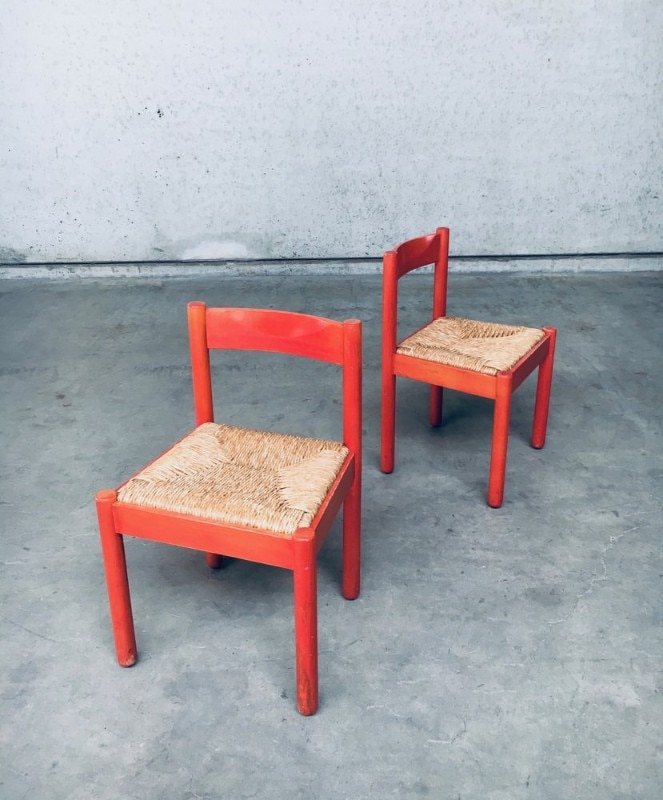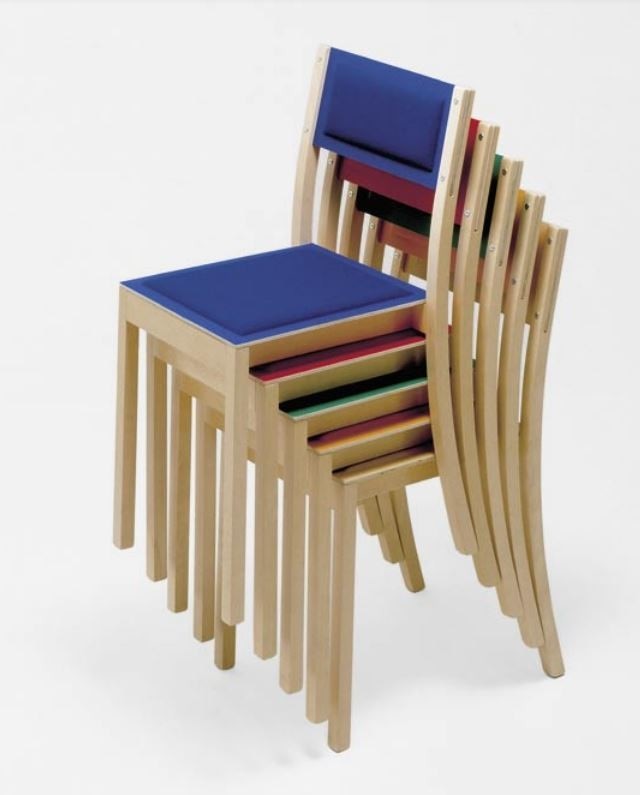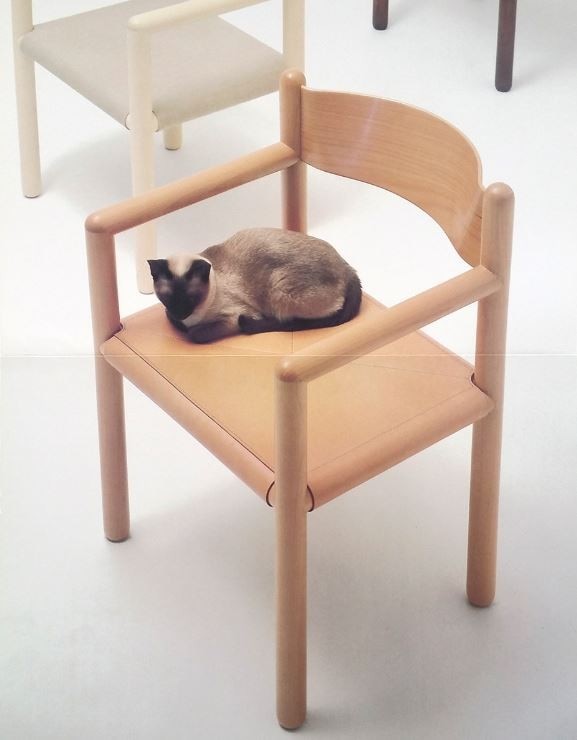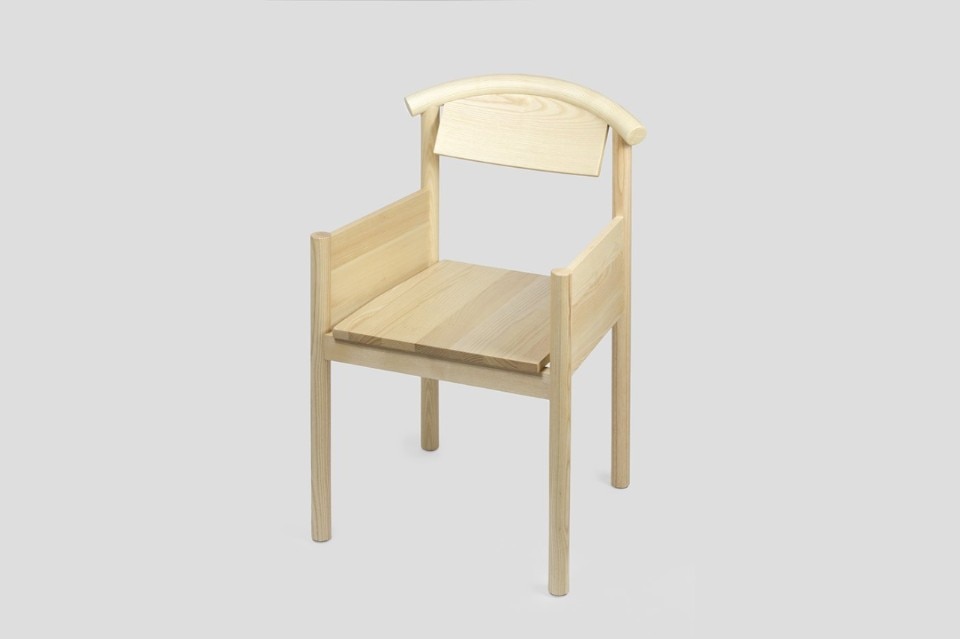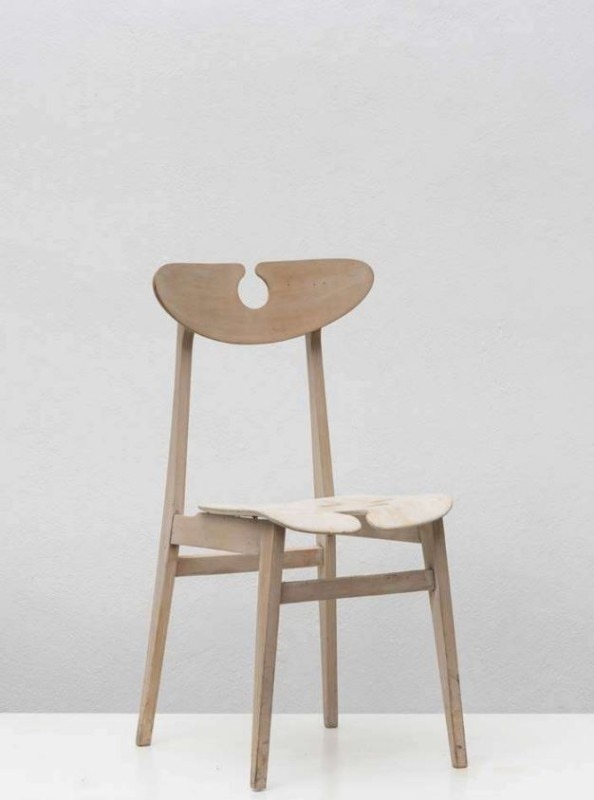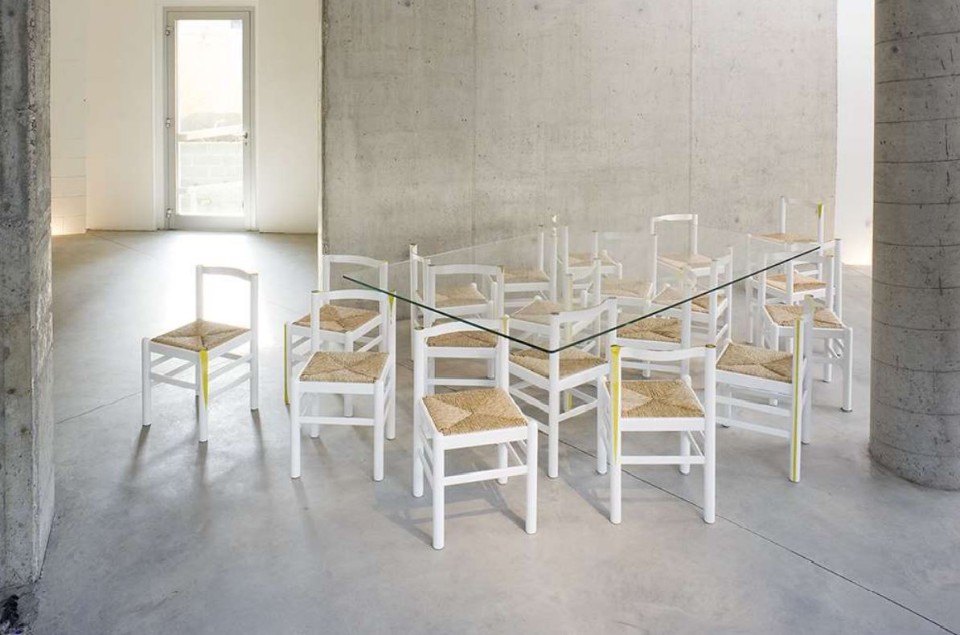Sitting is a necessary physical gesture that defines the first act of living. Ever since human beings started to become sedentary and gather in communities, they also started to create seats that were raised off the ground and featured a backrest. Since ancient times, there have been countless variants of the same basic form – four legs, two short ones at the front and two long ones at the back (connected, if necessary, by crosspieces), a flat surface as the seat, a band as the back. The only material used is wood, in various types, and decoration is non-existent, except for the purest one that we would describe as an “expressive underlining of form”.
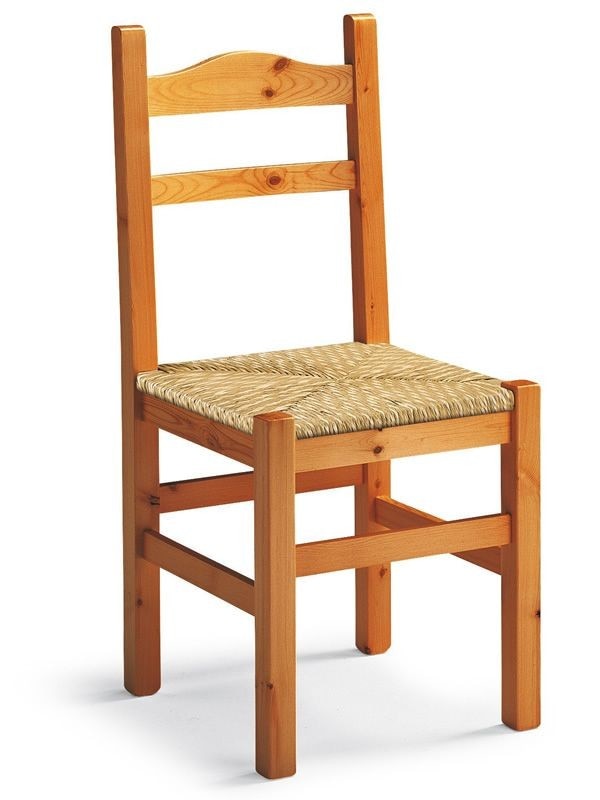
During our dialogue and exchange of ideas with Lorenzo Damiani, designer and thinker, not to say philosopher of the everyday life, when talking about the object that for every designer is the symbol of the highest (and also most common) challenge and that in the field of home furnishing design is the chair, his interests and intentions go towards the ideal object, the one that should always be at the basis of a new idea – the prototype object, the one that has the right shape for the right material and then (or before) also for the right function and cost. Damiani, who is always a partisan of good intentions, talks about a specific type of chair – the one commonly known as ‘Pisa’.
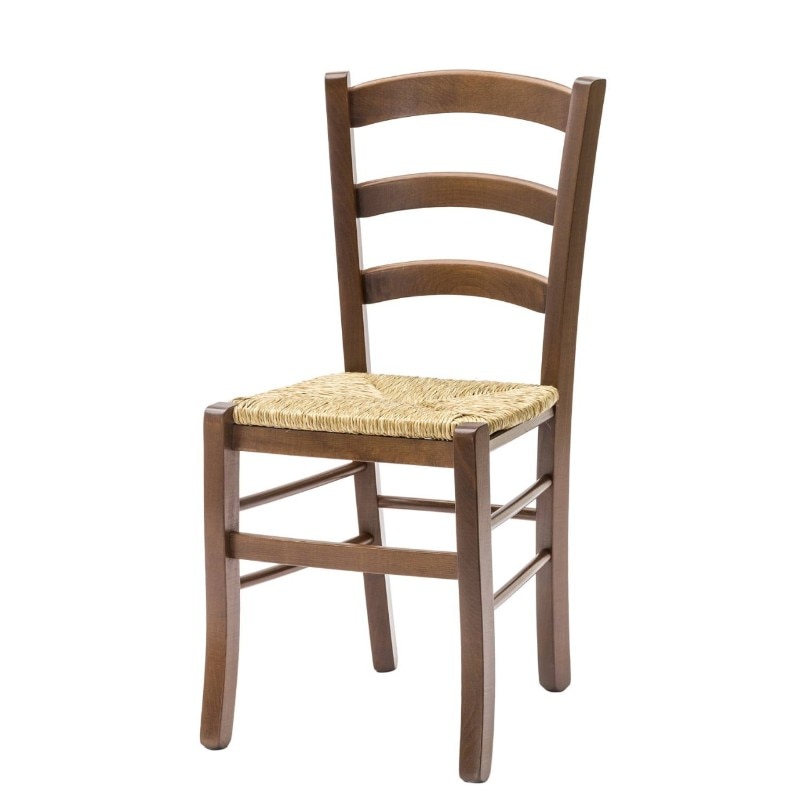
The Pisa chair is not a square-shaped, genuinely rough and wisely rustic ‘peasant’ chair, nor a ‘country’ chair, that is, a barely more refined and processed version of an already evolved object with rounded, smooth and polished surfaces, but rather the urban evolution of both, the prototype of the domestic city chair, popular but still anonymous, serviceable and justifiably ‘modest’.
The Pisa chair is made of solid wood, which is perhaps the only ‘rational’ material that could be used to make a chair that finds in its robustness and, therefore, durability and resistance to stress its strength without disregarding the overall cost: thanks to a smart use of wood, and especially of a few types of local woods such as beech, commonly found in our area, it becomes a great product from both an ‘economic’ and ‘ecological’ point of view.
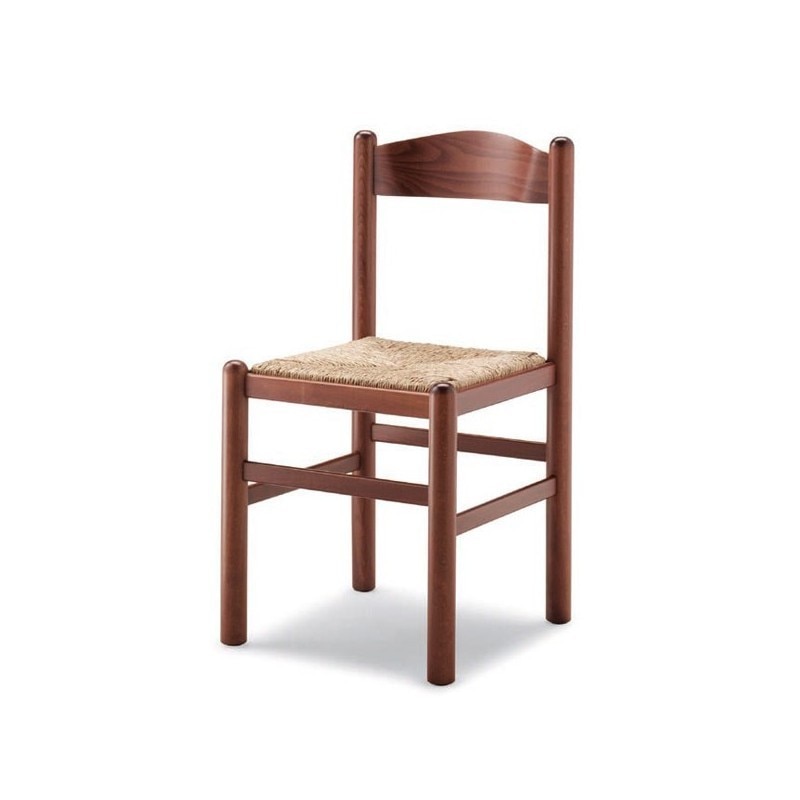
For a designer like Lorenzo Damiani, this chair, which carries these assumptions, is interesting because “it is a basic, simple, essential and honest product... in the sense that you can see and understand what you are buying. But it is not an object that is too elementary, or crude, having a refinement of form that is achieved through the cutting, shaping and turning of its components. The form arises in relation to the material used. The generous sections convey an idea of robustness and comfort. The segmented straw seat quietly decorates the composition. It is a product designed by the tools needed to make it. It is a product that is perhaps out of fashion but, for this reason, always up-to-date.
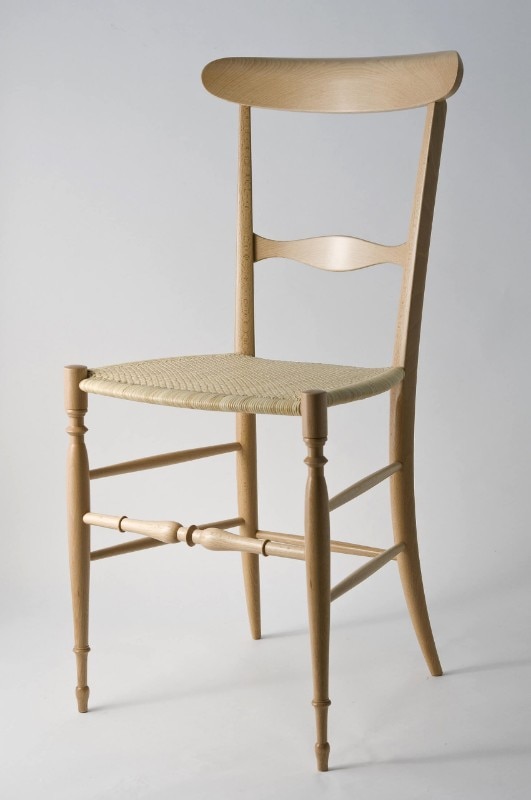
Moreover, this chair is very interesting because it exudes tradition, that beautiful Italian tradition of simplicity and “to say that bread is bread and wine is wine”. It is sincere! The Pisa chair with its solid wood frame, straw seat and wavy backrest is an excellent example of a ‘classic’ Italian chair. Nothing is left to chance. The legs have a circular section with a diameter of 45 mm and once they reach the backrest they turn into a hemisphere... I mean that the design, as the only licence or decorative virtuosity, ends with a hemisphere almost ‘to close the circle’. And all this virtuosity is achieved with a lathe.”
Surrounding this type of chair is a whole universe of other ‘normal’ chairs, which follow the approach of good building design. They are structurally solid, geometrically simple, formally dry, and recognisable from shared memory even though they’re always different.
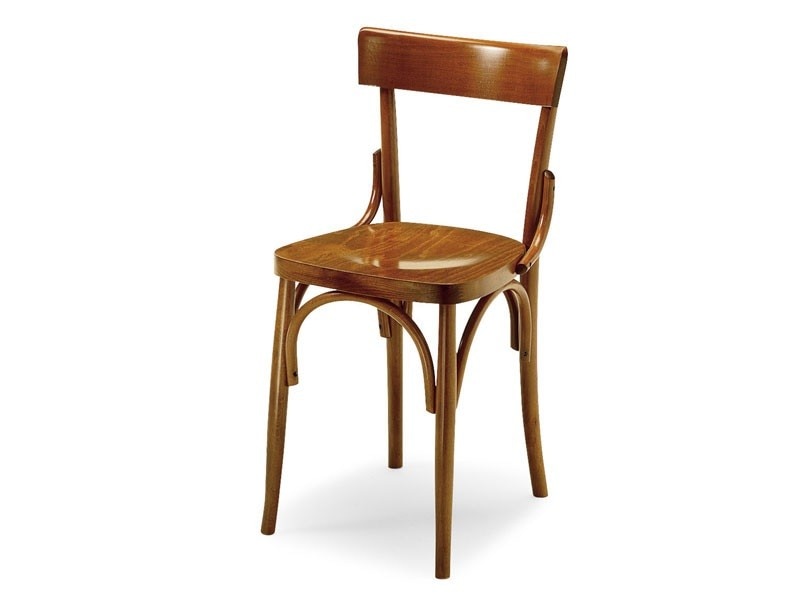
Among these countless variations, there are the chairs called Contadina, Paesana, Silvana, Savoia, Chiavarina, the ‘Milano’ type, the ‘Venezia’ type, the ‘Siena’ type... kitchen or dining chairs (therefore designed to be placed around a table), inexpensive, with a solid wood frame and straw or upholstered and covered seat.
The naming of these chairs, which are characterised by certain linguistic and formal details, blurs between the various geographical areas and gets lost in material culture and popular tradition, just as one typically gets lost when naming typical gastronomic dishes from each region, which although similar may vary in the name even a few kilometres away, demonstrating the general richness of popular culture.
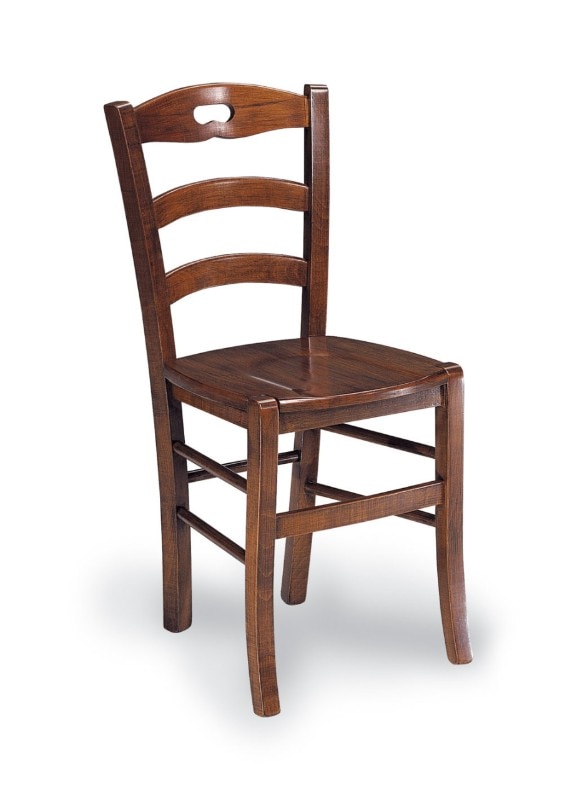
Talking about these chairs, which basically come from an anonymous design, we cannot but mention the time when Gio Ponti, right here on Domus, presented his Leggera chair, which he made with Cassina and wrote about in 1952 in an article in the issue number 268 with the emblematic title “Without adjectives”. Ponti wanted to communicate that he had aimed to design “a chair that was both light and strong at the same time, with a fair outline and a low price. A chair – a chair, modestly, without adjectives, a normal chair [...] a good chair [...] the chair of all time, the chair that was already there, the pre-existing chair.”
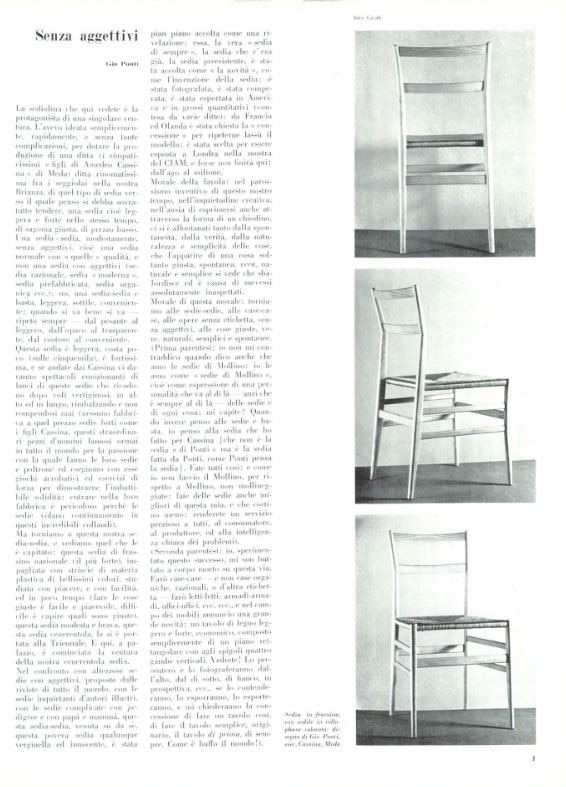
In the extensive and time-consuming research that so many designers have done to achieve the archetypal chair, strongly referring to the world of anonymous, popular, material and rural objects, each time some refined details and particulars make design that magical discipline of continuous refinement of an idea that is transformed according to the ends of the intention and the means available.
It is amazing to see the variety of chairs that have been produced from wood, straw and little else. This ‘type’ of chair is the perfect example of how the anonymous design, which has inspired many designers, still allows them the promise of redesign and refinement as conditions change, making the same simple, ordinary wooden chair, always unique.
The title of this article is a quote from “Rose is a rose is a rose is a rose,” a very famous sentence by Getrude Stein from her poem Sacred Emily, published in 1913.


